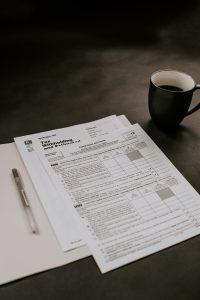Forex trading involves buying and selling currencies with the intention of making a profit. To make informed decisions, traders rely on analyzing market data to identify trends and patterns. However, selecting the right time frame to analyze can be challenging, especially for beginners. In this article, we will explore the different time scales used in forex analysis and how to choose the most appropriate one.
Forex charts can be viewed in different time frames, ranging from seconds to years. Each time frame provides a different perspective on the market and can be used for various trading strategies. The most common time frames used are:
1. Scalping Timeframe (1-minute/5-minute)
Scalping is a trading strategy that involves making multiple trades within a short period, usually seconds or minutes. Traders who use this strategy focus on small price movements and aim to make small profits frequently. Scalping requires a lot of concentration and quick decision-making skills, making it suitable for experienced traders. The 1-minute and 5-minute time frames are the most common for scalping.
2. Day Trading Timeframe (30-minute/1-hour)
Day trading involves opening and closing positions within a day, with the aim of making a profit from intra-day market movements. Traders who use this strategy rely on technical analysis to identify short-term trends and patterns. The 30-minute and 1-hour time frames are popular for day trading.
3. Swing Trading Timeframe (4-hour/daily)
Swing trading involves holding positions for several days to capture medium-term price movements. Traders who use this strategy rely on fundamental and technical analysis to identify trends and patterns. The 4-hour and daily time frames are popular for swing trading.
4. Position Trading Timeframe (weekly/monthly)
Position trading involves holding positions for several weeks or months to capture long-term price movements. Traders who use this strategy rely on fundamental analysis to identify macroeconomic trends and events that can affect currency prices. The weekly and monthly time frames are popular for position trading.
Choosing the Right Time Frame
Choosing the right time frame to analyze depends on several factors, including the trader’s trading style, trading goals, and risk tolerance. Here are some tips on how to choose the most appropriate time frame:
1. Determine Your Trading Style
Before selecting a time frame, you need to determine your trading style. Are you a scalper, day trader, swing trader, or position trader? Your trading style will determine the time frame that suits you best.
2. Define Your Trading Goals
What are your trading goals? Do you want to make quick profits or capture long-term price movements? If your goal is to make quick profits, then the lower time frames (1-minute to 1-hour) are suitable for you. However, if your goal is to capture long-term price movements, then the higher time frames (4-hour to monthly) are suitable for you.
3. Consider Your Risk Tolerance
Trading involves risk, and different time frames have different levels of risk. The lower time frames are more volatile and have higher risk levels, while the higher time frames are less volatile and have lower risk levels. Consider your risk tolerance when selecting a time frame.
4. Use Multiple Time Frames
Using multiple time frames can provide a more comprehensive view of the market. For instance, a swing trader can use the 4-hour and daily time frames to identify medium-term trends and patterns, while also monitoring the 1-hour time frame for short-term price movements.
Conclusion
In summary, selecting the right time frame to analyze in forex trading depends on various factors, including your trading style, trading goals, and risk tolerance. The most common time frames used are scalping (1-minute/5-minute), day trading (30-minute/1-hour), swing trading (4-hour/daily), and position trading (weekly/monthly). It is crucial to choose a time frame that suits your trading style and goals to make informed trading decisions. Additionally, using multiple time frames can provide a more comprehensive view of the market and improve trading outcomes.






